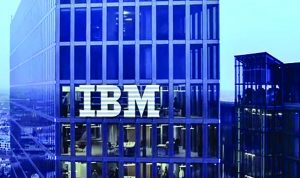IBM recently announced a new suite of tools to reimagine how people can approach application modernization. Its rollout of new AI capabilities such as the Accelerator for Application Modernization with AI is designed to help people reduce modernization efforts and costs dramatically with advanced AI capabilities. It includes a series of tools for optimization, including analysis and containerization, microservices recommendations, and continuous, guided feedback and AI learning.
The company’s most recent initiatives, Mono2Micro and Application Modernization Accelerator (AMA), empower app developers with new tools to help update legacy applications while extracting new value from them.
More than 80% of old-but-necessary apps remain on physical machines built a long time ago and often with scarce documentation, though many remain to be vital to the business, as they’re still in use, or need to be kept for records compliance.
Mono2Micro works by first analyzing old code to reveal hidden connections, for example, various components in the underlying business logic that contain numerous calls and connections to each other. It would be very difficult and time-consuming for an application architect to complete this task on their own. Mono2Micro grounds the developers’ domain-driven view of service to what is actually happening at the code level – with data-driven decision support on what may be ‘refactor-able’ based on their business, time, and resource constraints.
The AMA toolkit can both analyze and refactor previously developed applications written in legacy languages such as COBOL. It combines static analysis of the source code with an understanding of the structure of the application to create a graph that represents the legacy application. When used in conjunction with deep learning techniques, this graph-based approach facilitates data persistence.
In addition to helping IT leaders compress efforts and costs, IBM’s ultimate goal with application modernization is to get the journey to cloud right the first time, and in the most de-risked and optimized way, while simultaneously ensuring that the target state is scalable and flexible enough to support evolving business needs.
And for what it is worth, IBM’s timing is right. According to The State of IT Modernization 2020 report from IDG and tech company Insight, 26% of organizations are only at the beginning stages of IT modernization, and 19% have made moderate progress. The pandemic era of increased remote work and powerful available AI is motivating IT departments to examine legacy software systems for renewal, and with IBM’s new tools, this process will be easier and more efficient across the board.
























